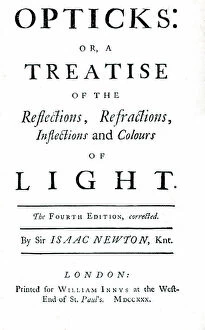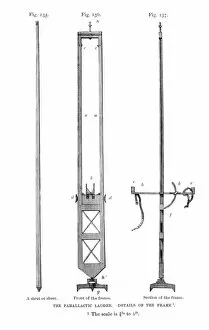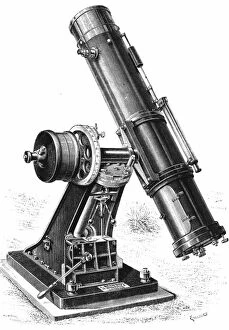Fourth Edition Collection
The Fourth Edition of "The History of the most Remarkable Life" takes readers on a celestial journey through time and space
All Professionally Made to Order for Quick Shipping
The Fourth Edition of "The History of the most Remarkable Life" takes readers on a celestial journey through time and space. The title page and frontispiece set the stage for an extraordinary adventure, showcasing intricate illustrations that captivate the imagination. One remarkable instrument featured in this edition is Smyths parallactic ladder mount, a groundbreaking invention that revolutionized astronomical observations. With its precise movements, astronomers were able to study celestial bodies like never before. Among the many fascinating observations made using this mount was the transit of Venus and a star. This rare event provided invaluable data for understanding planetary motion and furthering our knowledge of the universe. At the Paris Observatory, another magnificent telescope awaited discovery. Its powerful lenses allowed astronomers to peer into distant galaxies with unparalleled clarity, unraveling mysteries hidden among the stars. In Hungary, Grubb equatorial telescope stood tall as a testament to human ingenuity. Its innovative design enabled astronomers to track celestial objects smoothly across the night sky, revealing secrets about our cosmic neighbors. Closer to home at Fernhill Observatory, a transit instrument played a crucial role in mapping out constellations and measuring their positions accurately. This device served as an essential tool for navigating through space during countless expeditions. Smyths parallactic ladder framework continued to impress with its versatility at Tulse Hill Observatory's twin telescope setup. These synchronized instruments offered researchers new perspectives on distant galaxies by combining their observational powers. Edinburgh boasted its own marvel - a 12. 25-inch telescope that pushed boundaries even further. Astronomers marveled at its ability to capture stunning images of far-off planets and nebulae while uncovering secrets hidden within their depths. Meanwhile, back at Paris Observatory's meridian circle observatory, scientists meticulously measured star positions along Earth's meridian line – contributing vital information used worldwide for navigation purposes. Finally, we arrive at Greenwich's Lassell Dome – an architectural masterpiece from the 19th century.












